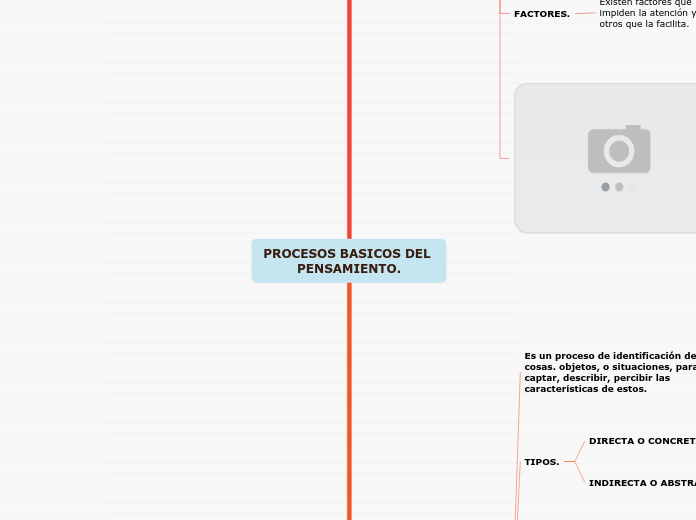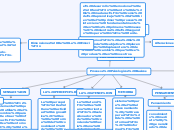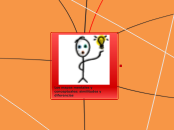PROCESOS BASICOS DEL PENSAMIENTO.
To name your story, you have to think about the overall message and what you want your audience to understand from the story. Also, make it relevant and easy to remember.
OBSERVACIÓN.
The ending of a story is essential. We all know that if the ending is weak, what happened before loses its importance. So make it unpredictable, but fair. A resolved ending answers all the questions and ties up any loose threads from the plot.
CLASIFICACIÓN.
DIRECTA E INDIRECTA.
PARTICIPANTE Y NO PARTICIPANTE.
ACTIVA Y PASIVA
Para una buena observación.
Tomar en cuenta los detalles.
Anotar los datos buscados en la observacion.
Tener un objeto preciso de lo que se quiere observar.
Contar con los instrumentos o tecnologías necesarias para la observación.
This is the closure section of the story.
See examples of possible outcomes below:
- all problems have been solved
- it's clear how each one of your characters ends up
- your main character is transformed by the challenge
INDIRECTA O ABSTRACTA.
Las características del objeto o situación son hechas a través de la información que se obtiene por otros medios.
DIRECTA O CONCRETA.
Try answering these questions to come up with a closure:
- Have all the problems been solved?
- Is there a clear picture of what happens with each character in the story?
- Has the challenge transformed your main character?
- How do the characters feel in the end?
Es el contacto con el objeto o situación, cuando se hace, uso, de los sentidos de las personas que realiza la observación.
Es un proceso de identificación de cosas. objetos, o situaciones, para captar, describir, percibir las características de estos.
This is the moment when the main character surpasses the last obstacle and finally faces their greatest challenge.
The climax usually follows one of these patterns:
- realization
- resolution
- choice
Type in your answer.
CARACTERISTICAS.
ESENCIALES.
Son las que hacen al objeto sea lo que es, su cualidad.
PARTICULARES.
Son las especificas del objeto que se observa.
GENERALES.
Son las mas comunes en todos los objetos de su clase.
ATENCIÓN
In the beginning of the story (or the exposition), you will need to introduce the setting and characters. You might also want to introduce the main conflict. This part of the story is important because it gives the reader necessary background information and maybe even a first insight into a character’s personality.
FACTORES.
The setting (time & place) of a story can change throughout the plot.
Existen factores que impiden la atención y otros que la facilita.
Your story can take place wherever your imagination will take you to.
For example: in an elevator, in an enchanted forest, etc. Don't forget to give details of the environment each time the setting changes, otherwise, the story can be confusing. Also, mention the seasons as each of them has unique weather and events.
FACILITA.
El interés.
La relajación.
La concentración.
IMPEDIMENTOS.
La fatiga.
La hiperactividad.
La distracción.
TIPOS.
INVOLUNTARIA.
Es cuando aparecen estímulos que atraen nuestra atención.
VOLUNTARIA.
Es la que realizamos de forma consciente y nos esforzamos para lograrla.
ALTERNA.
Capacidad de cambiar el foco atencional y moverse entre tareas muy distintas.
DIVIDIDA.
Nos permite hacer dos tareas al mismo tiempo. Capacidad limitada.
SOSTENIDA.
Se utiliza en tareas de tiempo prolongado.
Puede tener varios obstaculos:
Motivación, Fatiga, Aburrimiento y Tarea concisa.
FOCALIZADA.
Habilidad de responder específicamente un estimulo. Ignora todo lo demás
Capacidad de concentrar nuestra actividad mental en un determinado objeto.
CARACTERISTICAS
Characters are essential to a good story. Usually, the protagonist(s) is/are the most affected by the plot. Introduce a character by focusing on their actions, interests, and occupation, as the physical appearance doesn't make a difference in most cases.
ESTABILIDAD
Tiempo de una persona que permanece atendiendo a una actividad o información.
CICLICIDAD
Capacidad de atención segun los ciclos básicos de actividad y descanso.
FLEXIBILIDAD
Responde a situaciones de diferentes formas.
CONCENTRACIÓN
Cantidad de atención que se brinda a algo.
FOCALIZACIÓN
Centrarse en uno o unos cuantos estímulos a la vez.
ORIENTACIÓN
Dirige los recursos de manera voluntaria.
ACTIVACIÓN
Puesta en marcha o mantenimiento de procesamiento de la información.
EXPECTATIVAS
Función activadora y selectiva de la atención, incide e influye.
What is your character's main goal?
fight Evilfind lovedefeat his/her enemyrule the worldmake friendstime travelmake an awesome discoveryOther
INTENCIONALIDAD
Type in the name of your character.
Activar, enfocar y mantener la atención en lo relevante.
Add other qualities/attributes of the character.










